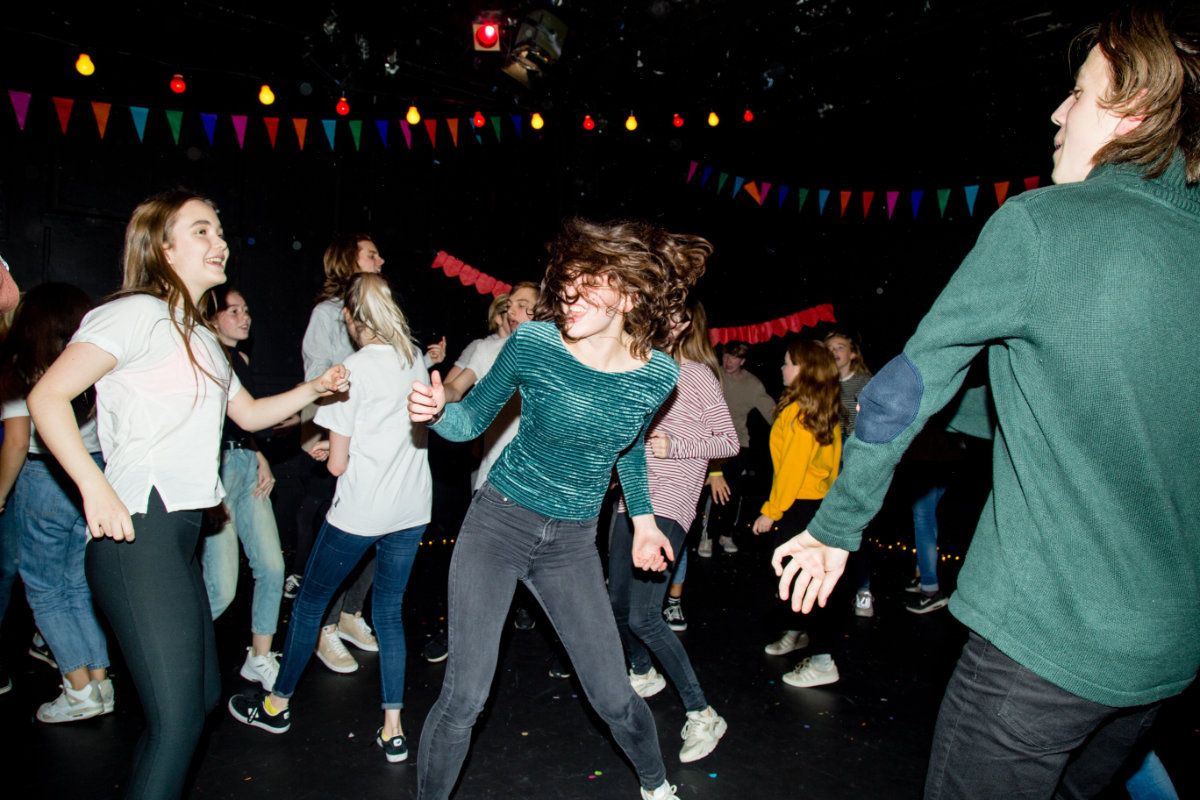Ásrún Magnúsdóttir’s Listening Party
Ásrún Magnúsdóttir’s Listening Party is built on the lives of teenagers and their favourite music tracks, rather than your usual dance suspects…
 Image of an earlier ‘Listening Party’ by Ásrún Magnúsdóttir. © Owen Fiene.
Image of an earlier ‘Listening Party’ by Ásrún Magnúsdóttir. © Owen Fiene.
Ásrún Magnúsdóttir
Listening Party
★★★★✰
London, Purcell Room, Southbank Centre
2 August 2025
www.asrunmagnusdottir.com
www.southbankcentre.co.uk
Part of the Dance Your Way Home season
Icelandic choreographer Ásrún Magnúsdóttir is unusual in that she does not particularly seek to work with professional dancers. Instead, she is “much more interested in working with people that have not given dance or dancing much thought, and in trying to make invisible choreographies visible.” Along with her regular collaborator Alexander Roberts, she has created a series of pieces based on working with local communities — defined by apartment blocks, streets, small towns, etc. A notable recurring theme is working with teenagers and the best known of these pieces is Listening Party, originally created in 2017 and since performed many times across Europe. In London for the first time, it’s proved an ideal fit and a great addition to the Southbank Centre’s Dance Your Way Home season, which celebrates the dance and dance experiences of real people.
Listening Party brings a group of teenagers together to dance to the musical pick of each one of them. At the Southbank there were twelve 13-17 year olds, mainly female and from a variety of backgrounds. It’s a roughly 50-minute show, and each of the twelve came forward, gave their first name, the music track they liked, and talked about its significance to them. I saw the first show, and while it was rough around the edges, it proved a charming and rather life-affirming work.
With rare loud exceptions, the spoken introductions were difficult to hear, so names and track titles could elude us, though snatches of why it was important did cut through and could be super thoughtful, like about race discrimination or friendship and hurt. There is no programme, so we don’t know anything about the cast or the track listing. And nothing about how Magnúsdóttir works, though clearly the intention is that it’s the teenagers in the driving seat and, for the most part, that comes across once the tracks get going.
Often the group would form a semi-circle behind one or two dancers doing some cameo moves. Hip-hop proved popular, but we had loose noodling, shrieks, clapping, and sometimes movement inspired by sharp pop video crispness or musical theatre. But we also had conga lines forming, and even a Rockettes line of high kicks coming together. It’s at its best to hip hop and/or songs with a strong beat where the group’s natural high spirits come to the fore, and they didn’t have to think about moves or doing something in unison.
But it wasn’t all about dance, as we had a karaoke singer, under a single spotlight, singing a heartfelt version of Adele’s Set Fire to the Rain. Another time the music took a back seat as a pair of friends celebrated their bond through a loose, self-choreographed, contemporary routine.
All up, Listening Party is a vibrant mix of friendly, natural exuberance that left me feeling happy.
The final track was ABBA’s Dancing Queen, and everybody in the audience was invited on stage to dance in their own way and celebrate with our London twelve. And terrifically, most accepted the invitation — kids, parents, tourists passing through, etc. It was a stage groaning with bonhomie across the age divides.
The takeaway is, in Magnúsdóttir’s words, how “honest and fragile” the teenagers are on stage, to which I would add that they are also thoughtful and thought-provoking. Teenagers are not always listened to, and Listening Party is about listening and (here at least) being impressed by their maturity, sense of fun and mutual respect for one another’s perspectives. There’s actually a really serious dimension to the work, and I would love to see it again, as well as more of Ásrún Magnúsdóttir’s community projects. It offers a very different and welcome perspective on dance and dance theatre.